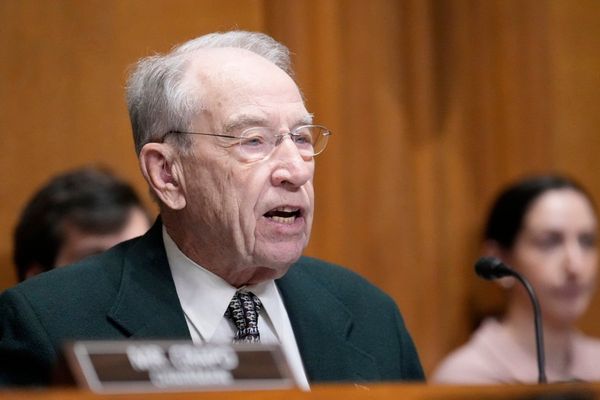Federal Reserve chief Jerome Powell, with his Aug. 26 Jackson Hole speech, ditched his optimism that policymakers can engineer a soft landing for the U.S. economy, skirting recession. The new goal: avoiding a major crash.
Powell signaled that the Fed will keep policy tighter for longer, grounding the economy to avoid turning the current inflation outbreak into a chronic 1970s-style disaster.
"Restoring price stability will take some time and requires using our tools forcefully to bring demand and supply into better balance."
With that, Powell took the air out of the Dow Jones, which abruptly tumbled 1,000 points and has continued to snowball.
But what Powell glossed over is why today's economy is so off-kilter that it needs to come in for an emergency landing. After all, inflation is coming down from its peak and GDP just declined in back-to-back quarters, rare outside of recession. Even so, the Fed's steadying hand has done little to right historic labor shortages and tight housing supply, and those imbalances continue to fuel outsize wage and rent increases.
The upshot: There may be little relief from elevated inflation until unemployment is rising in a sustained way. Most likely, it will take a recession to create enough slack to avoid another inflation upsurge once the Fed lets its foot off the brakes. And if we're headed for a hard landing, that surely means more turbulence for the Dow Jones and overall stock market.
Labor Force Participation Rebound?
The U.S. economy, it seems, is nearly out of running room. The supply of labor appears tapped out, with the jobless rate near a half-century low and job openings outnumbering unemployed workers by more than 5 million. The housing shortage, meanwhile, is causing a cost crunch for families. It's also likely exacerbating worker shortages by making it harder for people to move.
The August jobs report on Friday showed that hiring remains much too strong for the Fed's comfort, with employer payrolls increasing by 315,000. Yet, at first blush, the report appeared to provide a silver lining and, perhaps, a potential path to a soft landing. The Labor Department's household survey showed a big influx of 786,000 people joining the labor force, meaning they're working or looking for a job. That pushed the unemployment rate up to 3.7%.
That was welcome news after the labor force had shrunk in three of the four prior months. If August's rise is the start of a new trend, it would make the Fed's job easier in restoring balance. But don't get your hopes up. The 16-19 age group saw labor force participation rise by 331,000, adjusted for seasonal factors. On an unadjusted basis, participation fell by a half million. Teens may have just been keeping summer jobs a few extra weeks.
The bulk of the labor force increase came among 25- to 54-year-olds. That's good news, but here's the issue: The percentage of prime-working-age adults with jobs jumped to 80.3%. That's just off the 80.5% pre-Covid peak, which was the highest since 2001.
Here's the big picture: Labor force participation has largely recovered among those under age 65. Meanwhile, most of the adult population growth is coming among those 65 and up. It's not clear where the extra workers will come from, and it may take high wages to draw them into the labor market. That won't fly with the Fed.
Chronic Labor Shortages
The working-age population has grown by 4.5 million since February 2020, just before Covid hit, while 130,000 fewer people have jobs, Labor Department data shows. Yet as of July, there were fewer unemployed workers than at any time since 2000, when the labor force was about 15% smaller.
Aging demographics explain much of the labor shortage: The 65-plus population has grown by just over 3 million in the past two-and-a-half years, accounting for about two-thirds of the overall growth of the working-age population. Yet older Americans are less likely to work than they were pre-Covid. The drop in the labor force participation rate among those 65-plus has shrunk the ranks of available workers by more than 600,000, an IBD analysis finds.
Overall, Jefferies Chief Financial Economist Aneta Markowska figures that declines in labor force participation vs. pre-Covid have shrunk the labor force by 1.8 million workers, she told IBD ahead of the August jobs numbers.
By early next year, "once labor market slack is fully exhausted and there's no one left to hire," Markowska expects the U.S. economy to begin to succumb to Fed tightening.
Recession Needed?
A soft landing is "pretty close to impossible to my way of thinking," Peter Hooper, global head of economic research at Deutsche Bank, told IBD.
"To get inflation back down, you're going to need to see a substantial slowing of labor cost inflation."
The problem: Hooper and his colleagues estimate that the natural or noninflationary rate of unemployment "is now somewhat above 5%."
That's well above the 4% unemployment rate that the Fed has long assumed to be inflation-neutral. It's even further above the current 3.5% rate. To get there will take a much bigger rise in unemployment than the half-point increase seen as a minimum recession threshold.
The labor market, in other words, isn't simply tight; it's not functioning as smoothly as it did before the pandemic, Hooper argues. That view is pretty widely shared.
"So I think, broadly, a lot of economists think that the ... natural rate of unemployment will have moved up to some significant extent above where we think it was before," Powell said on July 27.
Before Covid, the jobless rate had fallen to 3.5%, with wage growth holding a bit above 3% and no apparent inflationary consequences. Now, with the unemployment rate in the same ballpark, wages are growing more than 5% a year.
Why Workers Are Hard To Find
So what's changed? The short answer is that it has become harder to match available workers to the jobs on offer. For each unemployed worker, there were a historically high 1.2 job openings in February 2020. But that figure has jumped off the charts — by 67% — to two openings.
Hooper attributes the poorer match partly to the mass retirement of "older, more experienced workers."
Reduced immigration, both due to policies put in place under President Donald Trump and to Covid restrictions, has also hurt labor supply and matching, he says.
Difficulty in getting affordable housing in many geographical areas has further reduced flexibility in the labor market, Hooper says.
The National Association of Realtors' housing-affordability index sank to a 33-year low in June. The dual rise in mortgage rates and home prices sent monthly mortgage payments soaring 54% from a year earlier.
Housing Inventory
The plunge in affordability should eventually put downward pressure on home prices, but so far homeowners have responded by deciding to stay put.
The number of existing homes for sale generally held above 2 million from the mid-1990s to the mid-2010s, topping 3 million during the housing bubble and ensuing crisis. Single-family homes and condos for sale downshifted to a range of 1.5 million to 2 million pre-Covid. But housing inventory has tumbled post-pandemic to just 1.3 million homes for sale in July.
July existing-home sales fell 20% vs. a year earlier to a 4.8 million annual rate, the lowest level since 2015. Yet the median home price still rose 10.8% from July 2021.
New single-family home sales, meanwhile, have crashed 30% from a year ago to a 511,000-unit annual rate, the lowest since 2016.
The supply of homes on the market relative to current sales has surged, but longer-term shortages remain.
Millennial Tailwind
The housing shortage also has a demographic element: The biggest birth years for millennials — over 4 million per year — were 1989 to 1993. That group has begun turning 33, the average age of first-time homebuyers, while 31 is the median age of renters in nonsubsidized housing, according to RealPage.
The demand tailwinds from millennials followed a dozen-year slump in home construction that came to an end in 2019. Yet the pandemic and associated supply problems quickly upended that momentum.
Realtor.com notes that the number of U.S. households increased by 13.8 million from 2012 through 2021. But builders broke ground on just 8 million single-family homes, a gap of 5.8 million.
Rent Surge Fuels Core Inflation
That helps explain the surge in demand for apartments. The national vacancy rate has tumbled from above 6% pre-pandemic to 3.9% in July, according to RealPage. Apartment rents for newly signed leases rose 17.2% compared with the prior tenant's rate, while people renewing leases paid 11% more.
Rent increases and high occupancy rate have begun to moderate from their recent peaks. That should continue in 2023, when a bumper crop of new developments should arrive.
Still, Markowska expects "at least 12 more months of very elevated rental inflation," as wage growth sustains demand.
The CPI inflation rate began to ease in July, slipping to 8.5% from 9.1% amid falling gas prices. But nonenergy services inflation matched a 30-year-high 5.5%. Those categories — which include shelter costs, medical service, transportation and education — account for 57% of household budgets.
Until labor shortages and wage pressures fade, there's little chance of core inflation falling to the Fed's 2% target.
Time The Market With IBD's ETF Market Strategy
Emergency Landing For U.S. Economy
With the labor market "clearly out of balance," as Powell put it on Aug. 26, the Fed needs to engineer an emergency landing, even if that means a recession.
The message of his Jackson Hole speech is that the U.S. economy will likely need to stay grounded for a while.
The Fed, he said, is laser-focused on avoiding a repeat of its failures in the 1970s. Back then, policymakers let their guard down every time the U.S. economy faltered, only to see inflation reignite. Eventually, it would take 20% interest rates and 10% unemployment to douse the inflation threat.
"Our aim is to avoid that outcome by acting with resolve now."
That's why the Fed's new posture has derailed the Dow Jones rally. Before Powell flipped his script, investors saw good economic news as bad news for stocks, since it tended to push up Treasury yields. But they greeted bad news as good, because it brought forward a Fed pivot to rate cuts.
But suddenly, "bad news is also bad news," wrote Swissquote Bank analyst Ipek Ozkardeskaya, because the hoped-for slowdown now seems likely to be more severe and worse for earnings.







